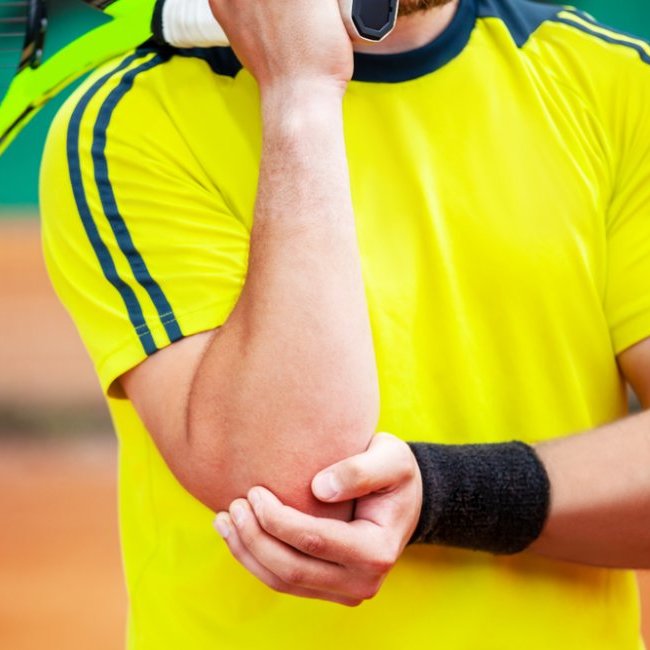


Physicians
Orthopedic Surgery
Hand & Wrist
 Healthgrades
Healthgrades
Orthopedic Surgery
Hand & Wrist
 Healthgrades
Healthgrades
Body parts
Swinging a tennis racquet or a golf club looks easy. But the inside story is complex. Your elbow is made up of muscles, ligaments and tendons, which hold the three bones of the elbow joint together. When forearm muscles and tendons, which attach muscles to bone, become inflamed, tendonitis of the elbow can develop.
Tendonitis of the elbow, also known as tennis elbow or golfer’s elbow, involves damage to a specific muscle known as the Extensor Carpi Radialis Brevis (ECRB). Repetitive motions over time, such as gripping a tennis racquet, can cause the ECRB muscle to pull away from the bone and weaken the supporting tendons.
Tendonitis of the elbow is an overuse injury. It’s caused by using a power grip over time. People who play racquet sports or grip a butcher’s knife or a paintbrush as part of their job are prone to tendonitis of the elbow. Tendonitis of the elbow is most likely to develop in your dominant arm, but it can affect either or both elbows.
When you come to the Orthopedic Institute of New Jersey (OINJ), your elbow doctor will ask questions about your lifestyle and medical history. Be sure to tell your doctor how and when your symptoms developed. You will undergo several tests, starting with a resistance test in which you’ll flex your arm, wrist and elbow to see where it hurts. You may also undergo an X-ray or an MRI to rule out other conditions that can cause elbow pain, such as arthritis in your elbow, spine or neck.
Most people get better with nonsurgical treatment, such as resting the arm, taking anti-inflammatory medication, physical therapy to help you get your strength back, steroid injections to relieve discomfort, and/or wearing a brace for support.
If your symptoms linger after six to 12 months of nonsurgical therapy, however, surgery may be an option. Your elbow doctor may recommend the best surgical option, based on your injury and other factors.
After treatment and you’re cleared to return to your sport or activity, it’s important to consider how to prevent symptoms from returning, such as changing the size of your racquet to make playing tennis easier on your forearm.